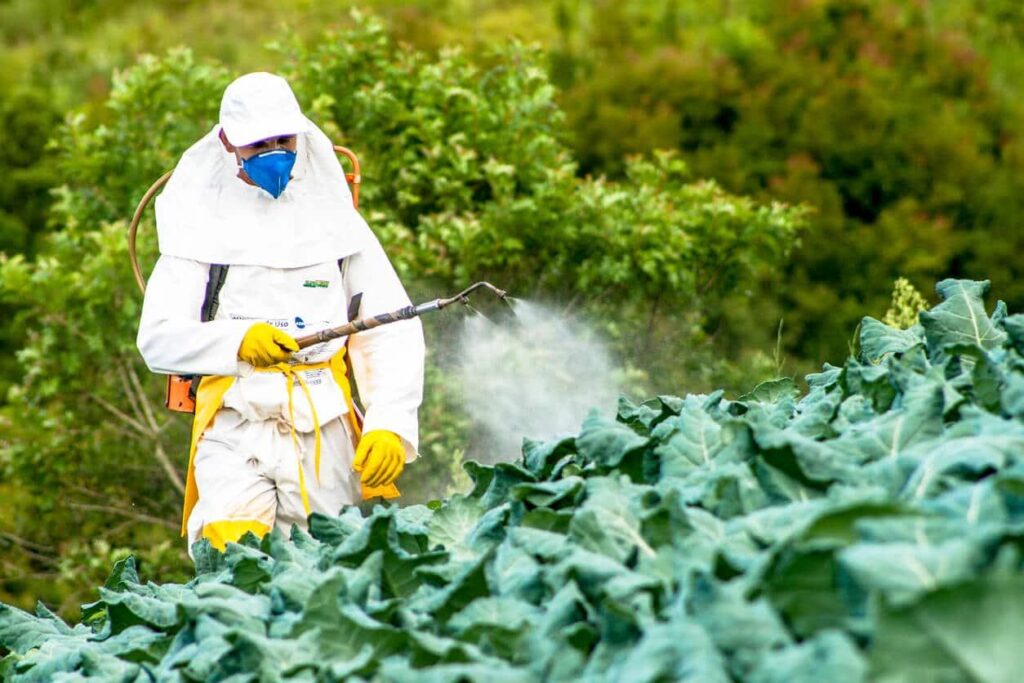Table of Contents
- Safety Alert Issued Following Pesticide Application in Residential Zones
- Health Risks Associated with Recent Pesticide Spraying Detailed by Experts
- Guidelines for Residents to Ensure Safety After Pesticide Use
- Authorities Outline Steps for Reporting Exposure and Seeking Medical Attention
- In Retrospect
Safety Alert Issued Following Pesticide Application in Residential Zones
Residents are strongly advised to steer clear of treated areas for at least 24 hours following pesticide application to prevent exposure to harmful chemicals. During this period, avoid outdoor activities such as walking pets, gardening, or allowing children to play outside. Signs and barriers will be in place around the sprayed zones, indicating restricted access, but vigilance remains critical for personal safety.
To minimize risks, please adhere to the following safety measures:
- Do not enter the treated premises until authorities have confirmed it is safe.
- Avoid consuming any produce or water from the area until further notice.
- Keep windows and doors closed to prevent pesticide drift indoors.
- Report any symptoms such as headaches, dizziness, or skin irritation to a healthcare professional immediately.
Health Risks Associated with Recent Pesticide Spraying Detailed by Experts
Experts have raised significant concerns about the immediate health effects following recent pesticide applications in local areas. Exposure to airborne chemicals can cause a range of symptoms, including respiratory irritation, headaches, dizziness, and skin rashes. Vulnerable populations such as children, the elderly, and individuals with pre-existing respiratory conditions are particularly at risk. Specialists emphasize that even brief contact with sprayed zones may lead to acute discomfort and potential long-term complications.
To minimize health hazards, authorities recommend strict adherence to safety precautions during and after pesticide use. Key guidance includes:
- Avoid entering treated fields or surrounding areas for at least 48 hours post-application.
- Keep windows and doors closed to prevent indoor contamination from drifting chemicals.
- Wear protective clothing if contact with treated vegetation is unavoidable.
- Seek immediate medical attention if adverse symptoms manifest.
Maintaining awareness and respecting these measures is crucial to safeguarding community health during pesticide spraying operations.
Guidelines for Residents to Ensure Safety After Pesticide Use
Residents should take immediate precautions following any pesticide application to protect their health and well-being. It is crucial to avoid entering treated areas until the designated reentry time provided by the pesticide label or local authorities. This precaution helps minimize exposure to potentially harmful chemical residues that may remain active on surfaces, vegetation, and soil. In addition, keeping pets and children away from these zones is essential, as they are more vulnerable to the effects of pesticides.
To further enhance safety, residents are encouraged to implement the following measures during and after pesticide use:
- Close windows and doors during spraying to prevent indoor contamination.
- Remove or cover outdoor furniture and toys to avoid residue buildup.
- Wash exposed clothing separately in hot water after pesticide exposure.
- Follow all label instructions carefully, including recommended waiting periods before reentry.
- Communicate with neighbors about spraying schedules to ensure community-wide safety.
Authorities Outline Steps for Reporting Exposure and Seeking Medical Attention
If you suspect you have been exposed to pesticide chemicals, authorities urge immediate action to minimize potential health risks. First, leave the affected area right away and move to fresh air to reduce further inhalation of harmful substances. It is essential to remove contaminated clothing and gently wash exposed skin with soap and water to prevent absorption through the skin. Avoid touching your face or eyes until you have thoroughly cleansed yourself. Following initial decontamination, seek medical attention as soon as possible, even if no symptoms are immediately apparent, as some effects may be delayed.
When reporting exposure, call emergency services or poison control centers and provide detailed information, including:
- The name or description of the pesticide involved
- The time and location of exposure
- The type and severity of symptoms experienced
- Any first aid measures already taken
Professional medical responders will assess the situation and recommend further testing, observation, or treatment to ensure safety and recovery. Maintaining clear communication and promptly following instructions can significantly improve outcomes after pesticide exposure.
In Retrospect
In conclusion, adhering to safety alerts and avoiding areas immediately after pesticide application is essential to protect public health and the environment. Authorities and pest control professionals urge residents and workers to stay informed about spraying schedules and to follow all posted warnings diligently. By remaining vigilant and cautious, communities can minimize exposure risks and ensure a safer, healthier living environment for all. Stay tuned for further updates from local health and environmental agencies.Check Our Other Blogs
- StunGun – Your Trusted Source for Stun Guns, Laws, and Self-Defense Tips
- PepperSprayLaws – Your Trusted Resource for Pepper Spray Information
- StunGunLaws – Your Trusted Guide to Stun Gun Legality and Safety




